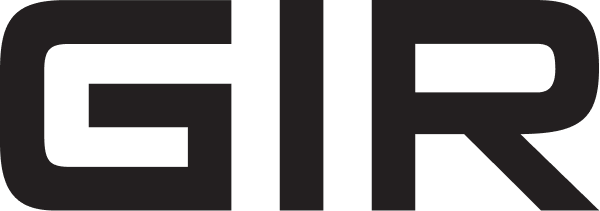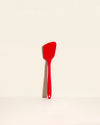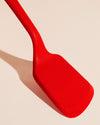
Straws, a seemingly mundane object, have a rich history that reflects our evolving understanding of sustainability and environmental consciousness. Today, straws are under scrutiny due to the growing concern about single-use plastics and their impact on our planet.
To grasp the importance of this debate, it's crucial to dive into the history of drinking straws, especially the invention of paper straws. This understanding can help us appreciate the efforts put into reducing the use of plastic straws, and why alternatives like paper straws, silicone straws, stainless steel straws, and more are gaining popularity.
What Is the History of Drinking Straws?
The history of drinking straws is a fascinating journey, tracing back to the ancient Sumerians. The Sumerians are believed to have used the first straws, which were made from ryegrass. Although practical, these natural straws had a significant drawback: they imparted a grassy flavor to the drink.
As civilizations advanced, so did the quest for a better drinking tool. The artificial straw was born, with different cultures experimenting with the specific materials they had at hand. For instance, the South Americans used a metal straw called the bombilla to drink yerba mate tea.
However, the significant breakthrough in the history of straws came in the late 19th century, thanks to an American inventor named Marvin Stone. Stone was dissatisfied with the ryegrass straws that were commonly used in his time, not only because of the flavor they imparted but also due to their grainy texture.
He specifically found them unreliable, and he did not like that they significantly affected the taste of his favorite mint julep drink. This dissatisfaction led Stone to invent the modern drinking straw, revolutionizing how we consume beverages.
What To Know About the Invention of Paper Straws
Marvin C. Stone, an American inventor, introduced the first paper straws. His idea was inspired by the paper cigarette holders that were popular during his time. Stone decided to create a straw using similar materials, namely manila paper coated with paraffin wax, which made the straw waterproof and more reliable — without the grassy flavor.
This invention came to life in Washington, D.C., in the late 19th century. The Stone straw was a straight straw without any bends, unlike the bendy straws we often see today. His straws were quickly adopted by soda fountains across America, where they were used to sip a variety of beverages, most notably the mint julep.
Stone's paper straws were a significant improvement over the ryegrass straws used previously. They were reliable, didn't affect the taste of the drink, and were a popular choice until the mid-20th century when a new material emerged on the scene: plastic.
How Were Plastic Straws Invented?
The transition from paper to plastic straws was initiated by another American inventor, Joseph Friedman. His idea was sparked by observing his young daughter struggling to drink a milkshake using a straight paper straw. This led Friedman to invent the bendy or flexible straw, a design that is still popular today.
Plastic straws quickly gained popularity in the fast-food industry, with major chains like McDonald's replacing their paper straws with plastic ones. The plastic straws were cheaper, more durable, and could easily be mass-produced.
However, the widespread use of plastic straws came with a significant environmental cost. Plastic straws contribute to plastic waste, a major source of pollution that affects both our land and marine life.
The infamous incident of a sea turtle with a plastic straw lodged in its nostril brought global attention to the harmful effects of plastic straws on marine life. This incident sparked a worldwide movement to reduce the use of plastic straws and find more sustainable alternatives.
What Is the Environmental Impact of Straws?
The environmental impact of used straws, particularly plastic ones, is significant. Every day, millions of plastic straws are thrown away, contributing to the mounting issue of plastic waste. These straws often end up in our oceans and landfills, taking hundreds of years to decompose.
The impact on marine life is particularly devastating. Plastic straws can harm and can even kill marine creatures like sea turtles, as they often mistake plastic waste for food. Furthermore, the sheer volume of plastic straws and other plastic cutlery that ends up in our oceans is a major contributor to the overall issue of plastic pollution.
Why Are Alternative Straws Making a Comeback?
Given the environmental concerns surrounding plastic straws, there has been a significant push toward more sustainable alternatives. Paper drinking straws have seen a resurgence, driven by their compostable nature and lesser environmental impact compared to their plastic counterparts.
Governments, retailers, and fast-food chains are at the forefront of this movement. In places like California, Washington, D.C., Canada, and France, legislation has been introduced to limit or ban the use of plastic straws.
Major fast-food chains, including McDonald's, have also started replacing plastic straws with paper ones in certain locations and are exploring alternative, sip-like lids. Besides paper, other alternatives are gaining popularity.
Reusable straws made from materials like stainless steel and silicone are becoming common. These straws, while more expensive upfront, can be used multiple times, reducing the overall waste produced. They are often fairly simple to clean and maintain, avoiding the need for disposable and less eco-friendly options.
This shift toward more sustainable options illustrates our growing understanding of the environmental impact of our choices and the measures we can take to mitigate them.
The Takeaway
The journey of the drinking straw, from the first ryegrass straws used by the Sumerians to the modern plastic straws, is a fascinating tale of innovation, convenience, and growing environmental consciousness. It's a journey that reflects our evolving understanding of sustainability and the impact of our daily choices on the planet.
Marvin Stone's invention of the paper straw in the 19th century was a significant leap forward, providing a reliable and taste-neutral solution for sipping beverages. However, the advent of plastic straws, while initially celebrated for their convenience and durability, has led to serious environmental consequences.
As we grapple with the issue of plastic pollution, the resurgence of paper straws and the advent of other reusable alternatives, like silicone and stainless steel, offer hope. These developments highlight our ability to innovate and adapt for a more sustainable future.
Embracing Sustainable Innovation With GIR
At GIR, we are stepping up to offer innovative, reusable alternatives to single-use plastic straws. Our range of environmentally friendly, reusable silicone straws is a testament to this.
They're dishwasher safe, BPA & BPS free, made of platinum-grade silicone, antimicrobial, and non-toxic, embodying the kind of sustainable innovation necessary for our times. Available in various types like Classic, Cocktail, Kids’, Standard, Smoothie & Boba, and Traveler’s, there's a GIR straw for every drink and every occasion.
Some straw sets also include convenient travel cases and cleaning squeegees. Just as Marvin Stone revolutionized drinking straws in the 19th century, we are striving to do the same today, getting it right for our planet and our future.
Sources:
Biography of Marvin Stone, Inventor of Drinking Straws | Thought Co
Who Invented the Straw? Unveiling Its Impactful Evolution | History Cooperative
Will Shifting to Reusable Straws Really Make a Difference? | NRDC

















